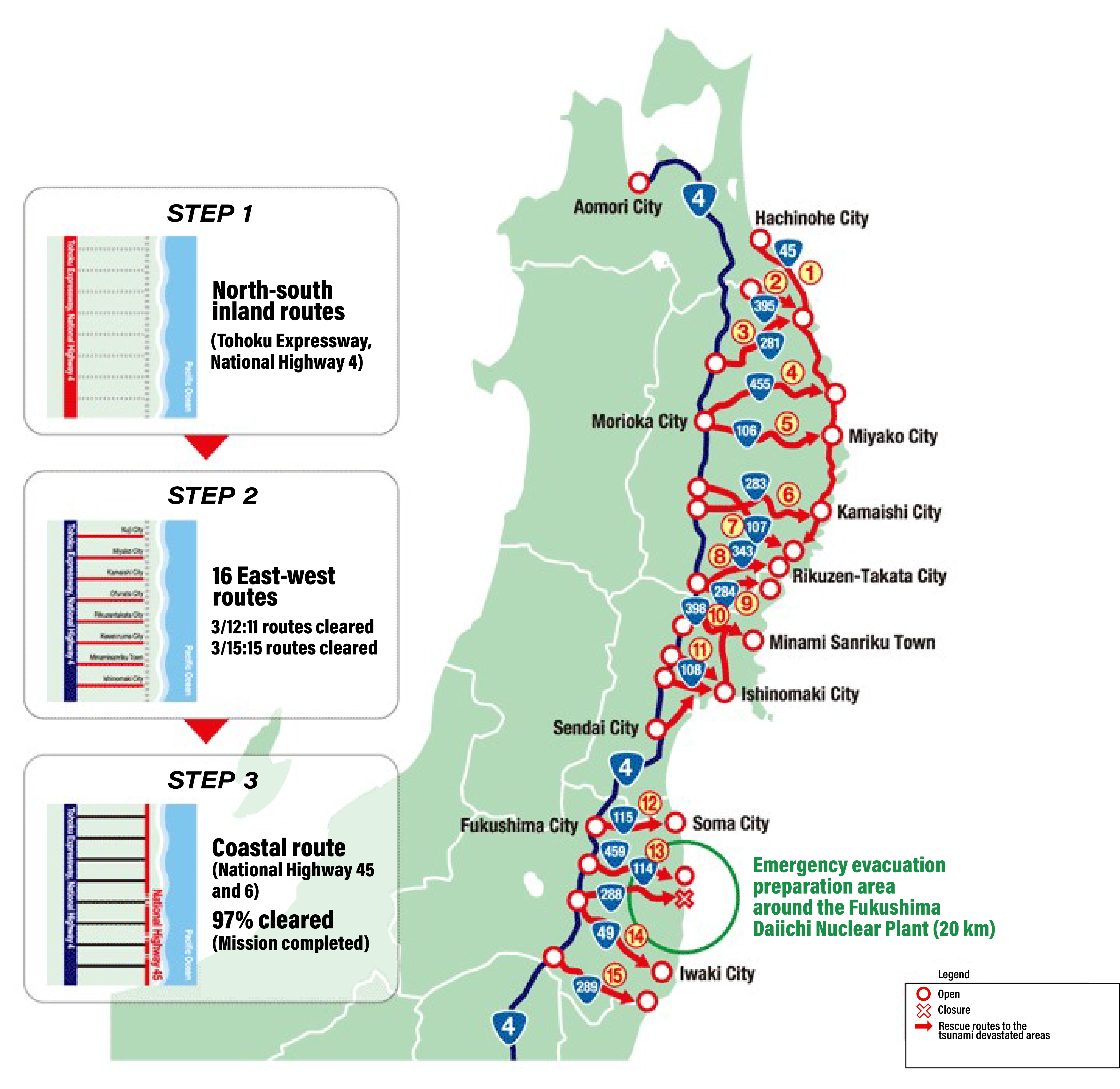
Disaster Management Manual
A manual for practitioners and decision makers!

Disaster Management Manual
A manual for practitioners and decision makers!
The disruption of the road network will affect a rescue, evacuation, and firefighting activities immediately after a disaster. If the road recovery is delayed, the transportation of goods and materials, and economic activities may be severely affected for a long time. It is an important issue for road managers to maintain the road function during and after a disaster. Having a redundant road network provides that even if a part of the route is disrupted, there will be alternative routes, and the overall road function will be maintained. Thus, it is important to increase the resilience of the road as a whole, not only from the resilience of the road infrastructure as a line but also from the resilience of the road infrastructure as a plane.
However, the development of a redundant road network is controversial in terms of cost-effectiveness and efficiency of daily economic activities. Therefore, it is important to properly evaluate in the road development plan both in terms of disruption of various road functions such as handling of detour traffic in case of disruptions, securing evacuation routes, medical and emergency activities, and the effectiveness of avoiding such disruptions by a network with a certain level of redundancy. Figure 2.2.2 shows the map of the operation “teeth of a comb” that was taken for clearing of the road that are located in poor road network at the 2011 East Japan earthquake.

* Operation “Teeth of a Comb” 1 was carried out to secure the human life of tsunami-affected area where redundant road networks were not well developed. (2011 East Japan Earthquake and Tsunami).